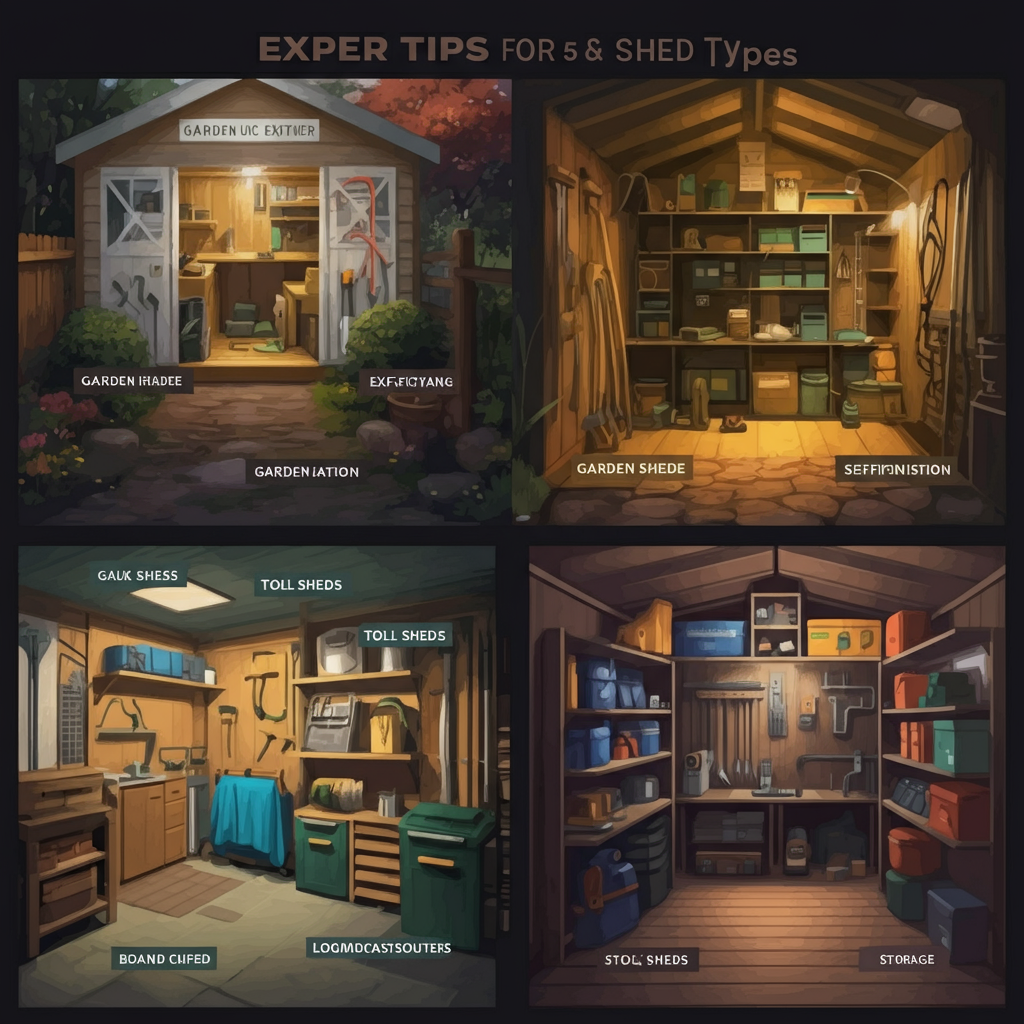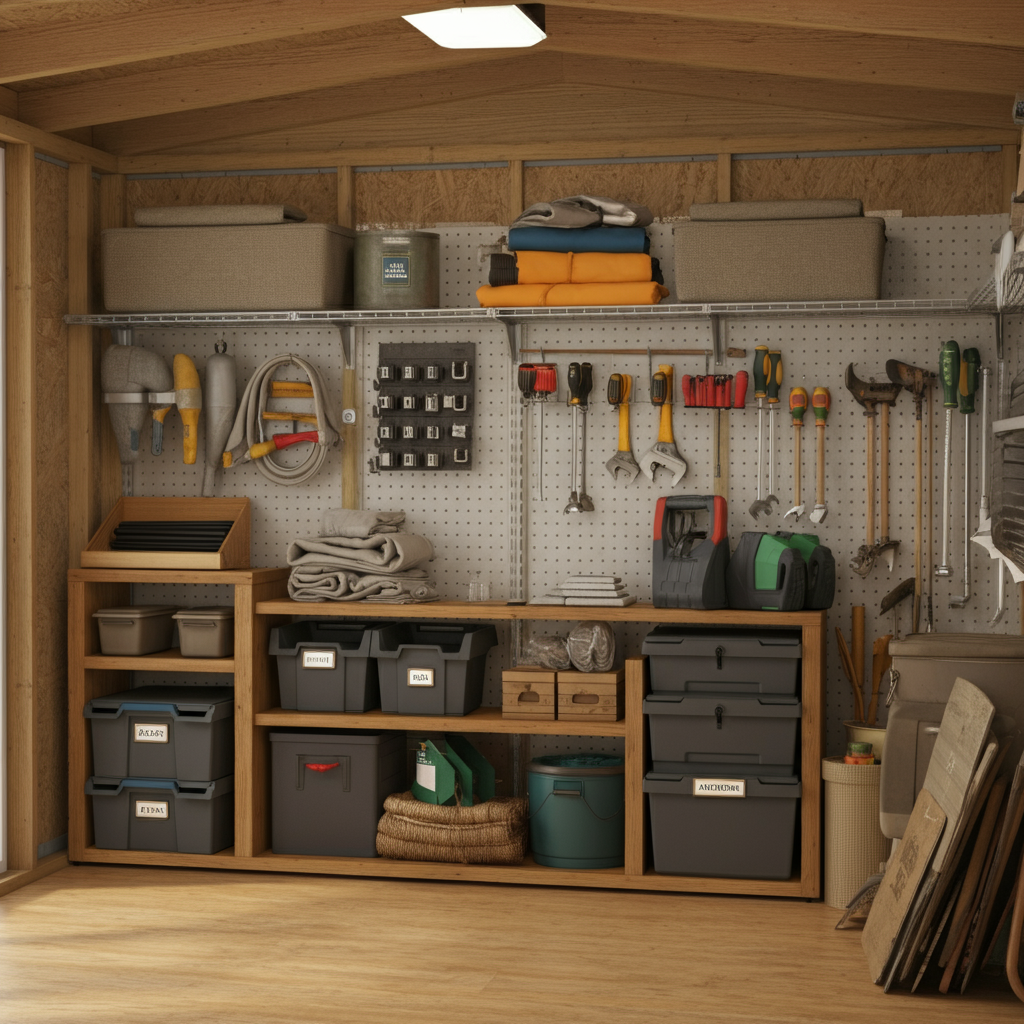Struggling to find a trowel amidst the chaos of your garden shed? Or perhaps you’ve been delaying that DIY project because you can’t locate your tools. A well-organized shed doesn’t just save time; it can transform the way you work and even increase your home’s value.
Whether you’re a seasoned DIY enthusiast, a gardening hobbyist, or simply trying to declutter, these 20 expert-backed shed organization tips will help you turn that cluttered space into an efficient, functional haven.
Planning and Preparation
Assess Your Shed’s Current State
Before diving into organization, take stock of what you’re working with. How much space do you have? What items do you store, and how frequently do you need access to them? Make a list of what stays and what can go. This crucial first step will help you visualize how to efficiently utilize your shed.
Define Your Organizational Goals
What’s the primary purpose of your shed? Is it for gardening supplies, tools, or seasonal storage? Clearly define your goals so the layout aligns with your needs. For example:
- Gardening enthusiasts: Create easy access to pots, soil, and tools.
- DIY buffs: Prioritize tool storage and a workbench area.
Gather Necessary Supplies and Tools
Ensure you have all the organizing essentials before starting. This could include:
- Shelving units
- Wall hooks
- Bins or containers
- Label makers
- Pegboards
Pro Tip: Invest in stackable, labeled bins for easy accessibility and maximum space efficiency.
Clearing Out and Decluttering
The Art of Decluttering A Step-by-Step Guide
Decluttering is about letting go of what you don’t need. Follow this step-by-step approach to make the process easier:
- Empty the shed: Remove everything to assess what you own.
- Group similar items: Put tools, gardening supplies, and other items in separate piles.
- Evaluate use: If you haven’t used it in the last two years, it’s likely time to part ways.
Donate Sell or Discard Making Smart Choices
Once you’ve sorted through your items, it’s time to decide their fate:
- Donate: Give unused tools or supplies to community gardens or charities.
- Sell: Valuable but unused items can be sold online for extra cash.
- Discard: Recycle or dispose of broken or unusable items responsibly.
Smart Storage Solutions
The key to a functional shed lies in storage solutions that maximize space. Here’s how experts recommend tackling this:
Vertical Storage Shelving and Wall Mounted Systems
Think vertically! Create more floor space by going up:
- Install shelving units to store baskets, bins, and loose items.
- Use wall-mounted hooks or pegboards to hang tools and equipment.
Overhead Storage Utilizing Ceiling Space
Don’t ignore the ceiling! Overhead storage can house infrequently used items like seasonal decorations or extra tools:
- Attach ceiling-mounted racks or overhead bins for lightweight storage.
- Use S-hooks or hangers to hang lightweight items like hoses or ropes.
Pro Tip: Keep frequently-used tools and items within arm’s reach for convenience.
Expert Tips for Specific Shed Types

Gardening Shed Organization
For gardening lovers, here’s how to maintain a clean and efficient space:
- Tool racks prevent small tools from getting misplaced.
- Repurpose old pallets as vertical storage for pots and garden gear.
- Use labeled glass jars for organizing seeds, fertilizers, and small items.
Workshop Shed Organization
A workshop shed thrives on precision and accessible tools:
- Install a workbench with built-in storage for hand tools and materials.
- Use magnetic strips to safely store small metal tools like screwdrivers and wrenches.
- Label and sort fasteners, screws, and bolts into clear jars or tackle boxes.
Maintaining Your Organized Shed
Regular Decluttering Routine
To keep your shed clutter-free, schedule a routine cleanup:
- Monthly check-ups: Take 10-15 minutes every month to re-evaluate and tidy up.
- Replace worn tools: Discard broken items and replace them as needed.
Seasonal Adjustments
Your shed’s organization will likely shift with changing seasons. Here’s how to prepare:
- Transition summer tools (e.g., gardening equipment) for winter gear (e.g., snow shovels).
- Store seasonal decorations in labeled bins for quick identification.
Pro Tip: For easy swaps, use color-coded bins by season.
People Also Ask Section
How do I start organizing my shed?
Start by removing everything from the shed, grouping similar items together, and decluttering unused or outdated items. Then, invest in shelves, bins, and pegboards to create designated spaces for your tools and supplies.
What is the best way to maximize small shed storage?
Utilize vertical and overhead storage, such as wall-mounted shelving and ceiling racks. Opt for stackable bins and multi-purpose tools to save space while maintaining efficiency.
How can shed organization improve my home value?
A well-organized shed adds functional storage to your property, which can be appealing to potential buyers. Clean, practical spaces signal a well-maintained home.
Achieving a Clutter-Free Life with an Organized Shed
An organized shed isn’t just about aesthetics; it’s about taking control of your space, improving efficiency, and reducing stress. By following these 20 expert-backed tips, you’ll save time, make better use of your tools, and increase the functionality (and value) of your property.
Start small, stay consistent, and watch your shed become your favorite, most efficient workspace. Want more storage tips? [Subscribe to our newsletter] for regular updates on home improvement and organization hacks!



